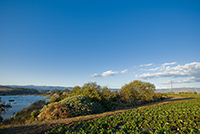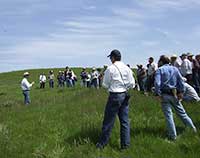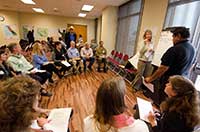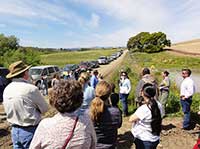Agriculture and Rural Lands Plan
Agricultural Water Quality StewardshipThe Central Coast of California abounds in natural resources. The region is home to the Monterey Bay National Marine Sanctuary (MBNMS), which protects one of the world's most diverse marine ecosystems. The watersheds that flow to the MBNMS, spanning 7,000 square miles and 6 counties, are also an important resource, supporting a diverse $5.6 billion dollar agricultural industry. Farmers are up against a number of challenges to stay viable, comply with regulations, and protect natural resources. In response to these challenges, farmers and agencies on the Central Coast have formed the Agriculture Water Quality Alliance (AWQA). AWQA is a unique regional partnership that brings together farmers, ranchers, technical service providers, researchers and resource conservation agencies to protect water quality in the Monterey Bay National Marine Sanctuary while maintaining the productivity of Central Coast farmlands through a voluntary stewardship approach. The AWQA collaborative approach is outlined in the "Agriculture and Rural Lands Action Plan" which was developed with broad stakeholder involvement and released in 1999. Central Coast Farm Bureaus played a strong leadership role in the development of this action plan. Since 1999, AWQA partners have worked together to reduce the runoff of sediments, nutrients, and pesticides from agricultural and rural lands through education and outreach, technical and financial assistance, research and monitoring, permit streamlining, and watershed coordination. The leadership and participation of Central Coast farmers and ranchers is key to achieving our vision:
To learn more about the Agriculture Water Quality Alliance, its projects, accomplishments, and priorities, please visit www.awqa.org. You can also access the Agriculture and Rural Lands Action Plan and other AWQA planning documents here: http://www.awqa.org/pubs/planning.html. Additional Information
For more information on AWQA, the Agriculture and Rural Lands Plan, or updates on implementation, please contact: |
|
|||||||||||||||||




